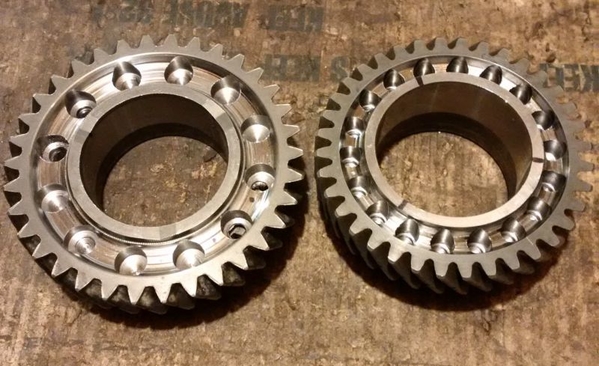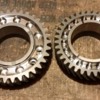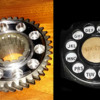In a conversation with Stan at Carlisle last spring he suggested putting all my efforts into 1 thread so people would know where to find it all. Well, here's the start-
The idea originally was to lighten some transaxle gears (and other parts) in a bid to get the rotating mass of my Berg 5 close to (or even less than) that of a 4 speed. The purpose of this is to make shifting easier and the synchros last longer. My friend Bruce knows a local guy- Jim- with a Berg 5 equipped 10 second street bug that shifted with a slight grind only into 2nd gear, and only when speed shifting at the local track.
The trans went back to Rancho where Mike Herbert (who originallly built it and put new synchro rings throughout) claimed upon teardown it looked great but re-assembled it with another new 2nd gear synchro anyway. It came back, got re-installed and again shifted great on the street, shifted fine while testing in the local warehouse district (after hours, of course!) but still had that little bit of a grind going into 2nd running the brackets at Mission Raceway. After all that work (and time shipping the trans back and forth from Vancouver to the LA area and back) Jim was a little disappointed and asked Bruce for advice.
Having just recently taken apart a couple of later transaxles and seeing gears with 'divots' cast around the sides, Bruce surmised it was done to reduce rotating weight (why else would VW put the extra work into parts for an economy car unless it was needed?) and he proposed this to be the answer to Jim's problem. Disassembly, a little machine work, reassembly and voila!- the thing shifts like it's supposed to. Bruce has put together 2 (I think) Berg 5's, both with lightened gears since then and is convinced that for synchro life this a worthwhile modification.
While I was looking for info online I came across an Alfa Romeo club where their transmission guy does this sort of thing to almost every Alfa trans he rebuilds- shifting is smoother (and faster) and with vintage parts getting harder to come by every day, lasting longer between teardowns is a big deal. Anyway- 
1st gear (on the left) went from 788-671 grams, 2nd from 737-617 
3rd gear started out at 607 grams and now weighs 490, while 5th went from 261- 226. More later- Al





